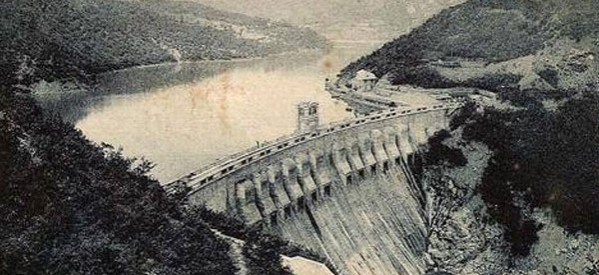Die Katastrophe von Molare – 1935
Deutscher Text nicht vorhanden
At 13:15 hours of 13th August 1935, following very heavy rainfalls, one of the two dams which formed the large hydroelectric reservoir of Molare, in Valle Orba (Piedmont, Italy), collapsed together with a portion of the foundation rocks.
The mudflow that poured out of the breach caused the death of some 110-115 persons and very serious damage to several villages and infrastructures of the valley.
This hydraulic barrage gave way under the push of a mass of water and mud assessed as 20 to 25 million cubic metres.
The mudflow thus generated ran down the whole valley destroying everything on its way: the hydroelectric power plant, several roads, railway bridges and many inhabited centres. The mud wave reached the village of Ovada in about 20 minutes.
The main dam was completed in 1926 and soon after it was decided to raise the dam of another 13 m in order to increase the capacity of the basin. This decision, though, posed a serious problem: in one point of the perimeter of the new impoundment, some 300 m west of the main dam, a saddle formed by two ridges would have been at a lower elevation with respect to the maximum storage level. Consequently, the water could have overflowed the saddle and pour out into the underlying riverbed.
This situation was solved by building a secondary barrage made up of a 110 m long and 14 m high dam. This new engineering structure was planned and constructed in a hasty way without carrying out any geological investigation since, according to the opinion of the designers, the ground in correspondence of the new dam was made up of “sound rocks”.
The collapse of the secondary dam of Molare is a clear example of the serious consequences brought about by neglecting the geological and, more in general, the environmental features of a given area where important engineering works have to be planned and constructed. Indeed, notwithstanding its modest dimensions, the secondary dam was in fact built on weak, deeply jointed rocks which could not offer adequate support to the dam’s foundations.
In the trial that followed the Molare disaster the company and the engineers in charge of the planning and construction of this hydraulic work were declared not guilty.

